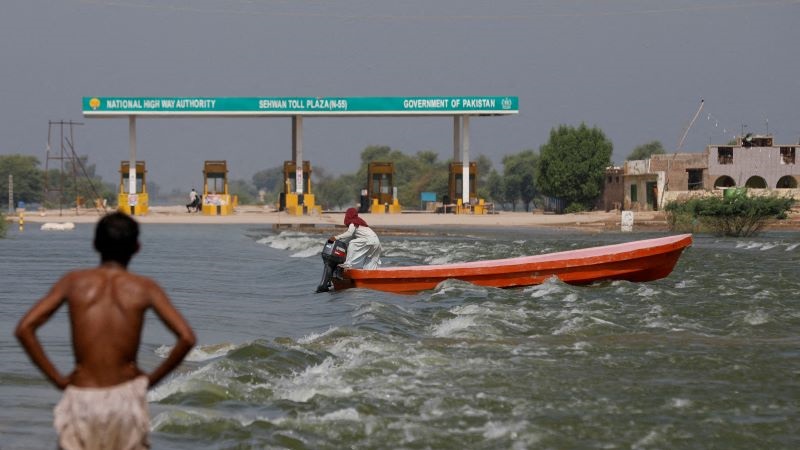The US, which long opposed a fund, wants it to focus on a narrow set of disasters in a small number of countries
When countries adopt a global fund for climate disaster losses and damages at the Cop28 climate talks, the USA will be arguing to limit its use, according to U.S. officials.
Developing nations successfully demanded at last year’s Cop27 climate summit funding for loss and damage caused by climate change, including a dedicated fund, which countries will adopt this year.
In climate negotiations, “loss and damage” refers to existing costs incurred from climate-fueled weather impacts, such as last year’s devastating Pakistan flooding.
The new Loss and Damage fund should target the most vulnerable countries and focus on areas not already covered by development banks or emergency relief funds, two U.S. State Department officials told Reuters.
The European Union has taken a similar position. But the G77+China umbrella group of countries classified as developing by the United Nations argues that they are all particularly vulnerable and should be eligible.
Need to specialise
US negotiator Christina Chan is part of a 24-country committee deciding how the fund will work before the Cop28 climate summit in Dubai can officially adopt it this year. The committee will meet again next week in the Dominican Republic.
“We don’t really want redundancy with existing funds, because that’s not an effective and efficient way to deal with the issue,” said Sue Biniaz, deputy special envoy for climate at the State Department.
Instead, she said, the new fund should develop an expertise “as opposed to covering everything in the universe.”
Germany set to miss net zero by 2045 target as climate efforts falter
The U.S. had wanted a two-year process to analyse funding gaps before launching a fund, but it went along with the Cop27 consensus for action this year, Biniaz said.
At the committee’s last meeting in July, the U.S. proposed focusing the fund on covering slow-onset events such as sea level rise and desertification, as such needs can fall through the funding cracks, said Chan. This would mean less focus on climate disasters like floods, heatwaves and storms.
She said the US also suggested the fund be used for post-disaster reconstruction if a country needs more beyond eligible development bank grants.
Reluctant evolution
The U.S. position on loss and damage has evolved in recent years, from a point at which Washington and the EU resisted even discussing the issue for fear of legal liability for historic emissions.
At Cop27, the EU agreed to a fund on the condition that China pays into it – although it later abandoned that insistence. The US did not block the Cop decision approving the fund.
Biniaz said she “violently opposes” arguments by some countries and environmental groups that developed countries have a legal obligation to pay into the fund.
Nonprofit Action Aid has said, for example, that the 1992 U.N. Framework Convention on Climate Change implies this obligation with the idea that industrialized nations responsible for emitting most of the carbon dioxide in the atmosphere over the last century should do more to address climate change.
“That’s just completely inaccurate,” she said on whether developed countries are liable, adding that the 2015 Paris Agreement did not include such an obligation.
Other sources
Instead, both Washington and Brussels say the fund should be filled from myriad sources including industry taxes, philanthropic donations or other schemes. Biniaz said one example might be revenues from the U.S.-proposed c
Read More

